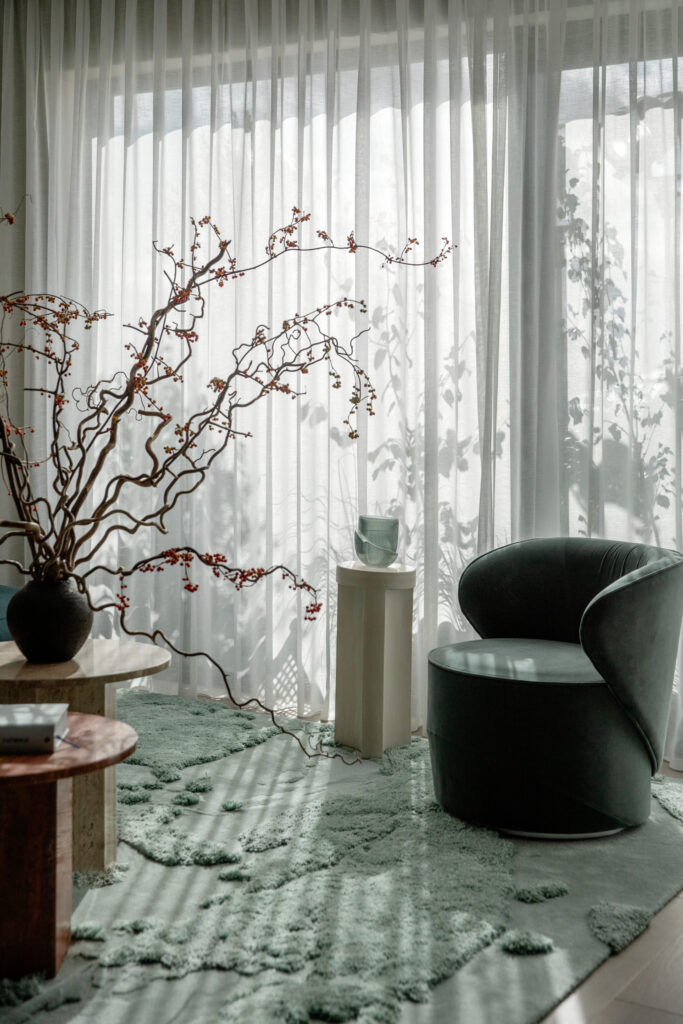
Certain truths and realities cannot be overlooked, even through the lens of interior design. One of such facts is the pervasive gender gap which remains an issue across various countries, including the US, where disparities in income, representation, and opportunities have become evident. We cannot ignore how this is of concern to interior design as it deals with the ways that environments have a profound impact shaping behaviors and perceptions. Of course, the issue is much more complex and requires to be addressed by every sector of society; however as members of the design community we can play a part in addressing these concerns through spaces that work towards breaking down gender barriers. This can be done, for example, by creating workspaces that facilitate equal participation, challenging gender stereotypes through decor and layouts, and providing inclusive amenities.

Before we jump into more detail on the requirements of inclusive design, let’s take a look at the aspects of our surroundings that need to be changed. Some interiors inadvertently reinforce gender stereotypes, for instance, offices that wish to draw on a heavy masculine aesthetic characterized by dark colors, heavy furniture, and imposing structures that perpetuate traditional, male centric corporate culture. The opposite also applies to spaces that prioritize delicate or pastel aesthetics in residential design, assuming a stereotypical notion of femininity that marginalizes diverse preferences. However, most frustrating of all can be public facilities with inadequate consideration for inclusive features such as insufficient baby-changing facilities or nursing rooms which unintentionally hinders women’s participation. This is precisely where thoughtful design can start by creating empowering spaces where both men and women feel equally accommodated.

Knowing how
Developing interiors that actively combat the gender gap requires refocusing our design strategies to inclusivity and equity, and assessing where our design choices are coming from. Firstly, seeking a balanced design will lead us to a neutral color palette, ergonomic furniture that prioritizes comfort for everyone, and a mix of decor styles that help avoid stereotypical motifs. Meanwhile, the next step will focus more on a layout consisting of flexible, multifunctional spaces that adapt to different needs and activities, as well as equitable set-ups that encourage collaboration rather than enhancing hierarchical structures. Last but not least, design must prioritize accessibility in public spaces by including carefully thought-out amenities like gender neutral restrooms and childcare facilities. Ultimately, involving diverse voices in the design process and considering user feedback, can contribute to more thoughtful and equitable interiors.

Seeking inspiration
Up to date with the demands of a more conscious society that is fighting to be heard, some designers have already stepped into the ongoing conversation about gender-inclusive design, creating spaces and products that cater to a wide range of preferences and needs. Here are three of the many that have inspired us today.

Kelly Wearstler
Renowned for her bold, unconventional designs, Kelly Wearstler is recognized for her challenge to traditional norms and expectations of luxury design. It’s precisely her eclectic mixture of styles, materials, and colors, which allow her to create spaces outside the bounds of conventional gender norms. Instead, her work prioritizes individuality and the value of personal expression and history in interior spaces. Through her designs we can celebrate the unique aspects that make us extraordinarily human beyond any genders, expectations, or other’s ideas.

Jean-Michel Gathy
As an architect and interior designer, Jean-Michel Gathy inspires us with creations that showcase how luxury can also pay attention to inclusivity. Designing for worldwide resorts and high-end hotels, Gathy retains a harmonious balance between masculine and feminine elements in all his creations, ensuring that the spaces appeal to a diverse range of guests. By considering individuals’ comfort rather than falling for trends and generalizations, his approach reflects a strong commitment to creating environments that transcend gender expectations in order to achieve a holistic approach to artistry. This is actually what innovative design is all about.

Neri&Hu
For our last example we are drawn to the Shanghai-based design firm founded by Lyndon Neri and Rossana Hu, as it makes its way through the design industry with thoughtful and innovative ways of addressing social and cultural issues in architecture and interiors. The primary concern for Neri&Hu is to create spaces that resonate with people’s intersectional and complex identities, while also responding to the diverse needs of users, irrespective of gender. By incorporating elements of cultural context and human experience, this firm contributes to the conversation around inclusivity and equality with examples of how humane design can outlive any traditional gender conceptions.

Stepping into the conversation
In short, gender inclusivity is not a final product but rather a conscious and ongoing process that is carried out day by day through our conscious choices. Likewise, interior design that fights the gender-gap, involves a deliberate departure from traditional and stifling stereotypes, to foster environments where every individual can have an equal opportunity to strive to become their best self. The designers we have mentioned today, are among those who exemplify the power of inclusive interiors by providing a source of inspiration and a model of caring design. At the same time, through methods such as the ones described above, designers can also contribute to breaking down gender barriers while, us as readers and writers, can immerse ourselves in the discussion towards inclusivity by recognizing the pivotal role that our built environment plays in shaping and reflecting societal values.
